
Laika's name derives from the Russian word for "bark". She was a stray, picked up from the Moscow streets just over a week before the rocket was set to launch. She was promoted to cosmonaut based partly on her size (small) and demeanor (calm)
They chose bitches because they don't have to raise a leg to urinate which means they need less space than the males.
The Soviet Union sent Laika up to space in a satellite on November 3, 1957 - sixty years ago.
But unluckily laika was only able to survive for a few hours, flying around the Earth nine times.
Those nine orbits of Earth made Laika the world's first cosmonaut - sacrificed for the sake of the success of future space missions.
As facts say that before Laika, several dogs had been blasted up into suborbital space for brief periods of a few minutes "to check that it was possible to survive in weightlessness." "Now it was time to send one into space.
First the dogs has to get accustomed to the idea of space travel inside a pressurised capsule just 80 centimetres (31 inches) long in lab and later they were transferred into smaller and smaller cages.
The canine candidates spent time in a centrifuge, that simulates the gruelling G-forces created when a rocket blasts off, as well as being exposed to similar noise levels. They even ate jellified space rations.
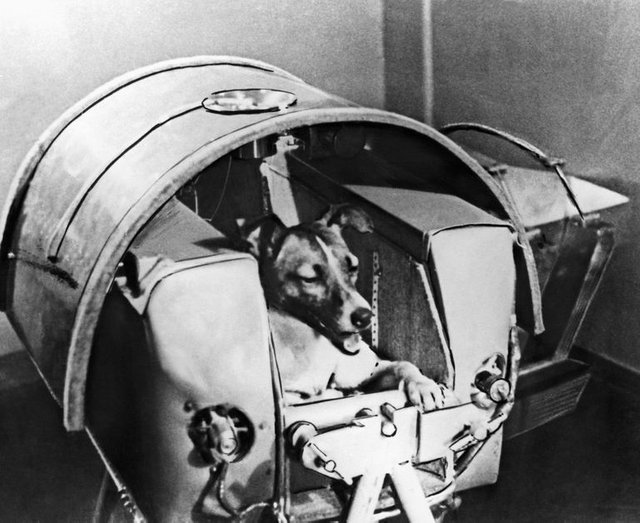
'OVERHEATING AND EXHAUSTION'
They knew that she was destined to die on the flight, since there was no way to get her back - this wasn't possible at the time.
On the eve of Laika's mission, the scientists went in to say goodbye to the dog and give her a final caress.
The Sputnik satellite carrying Laika blasted off on a rocket at 5.30 am Moscow time from Kazakhstan, where the Soviet Union would later base its Baikonur cosmodrome.
Initially nothing seemed to be going wrong.But, during blast-off, Laika's heart beat speeded up a lot. But after three hours, her heart beat was back to normal.
Then suddenly during the ninth orbit of the Earth, the temperature inside the capsule began to soar and reached over 40 degrees celsius (104 degrees Fahrenheit), due to insufficient insulation from the Sun's rays.
The hope was that Laika would stay alive for eight to 10 days, but instead she died from overheating and dehydration after a few hours.
Soviet radio nevertheless kept broadcasting daily updates on her health, insisting all was well. The official version was that she died after eating poison administered in her food to avoid a painful death on re-entry into the Earth's atmosphere. Moscow maintained this fiction for many years.
The satellite carrying her remains burnt up in the atmosphere five months later, on April 14, 1958, above the Antilles island group.
OTHER ANIMALS SENT TO SPACE
First space monkey
In June 1948, rhesus monkey Albert I was the first mammal to be sent up to space in a rocket, on a NASA mission to test its reaction to weightlessness. He reached 63 kilometres (39 miles) in altitude, just below the start of outer space at 100 km.
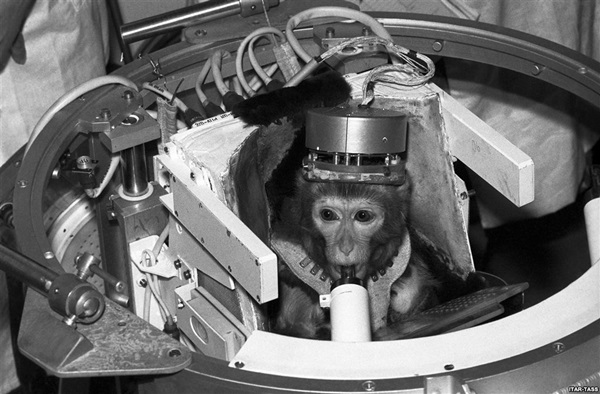
Canine cosmonauts
Tsygan and Dezik in August 1951 were the first dogs to be sent into space on a sub-orbital flight for the Soviets, returning alive.
But the first full orbit of Earth by a living being was accomplished by Laika, a small mongrel picked up from the street and sent up in the Soviet Sputnik 2 on November 3, 1957, enclosed in a metal container.
Initial reports said she had withstood the 1,600 kilometre (1,000 mile) journey from Earth but it emerged that she died after a few hours due to a malfunction in the rocket’s equipment.
In August 1960 the Soviet Union sent something of a Noah’s Ark into space, including dogs Belka and Strelka, a rabbit, 40 mice, two rats and 15 flasks of fruit flies and plants.
Strelka later gave birth to a litter of six puppies, one of which was given to US president John F. Kennedy as a gift for his children.
Space chimps
The first chimpanzee in space, in January 1961 paved the way for the first space flight by an American, Alan Shepard, one month after Yuri Gagarin’s historic mission in April 1961.
Fellow-chimp Enos became the only animal from the United States to be sent into orbit in late 1961, just before John Glenn circled the Earth.
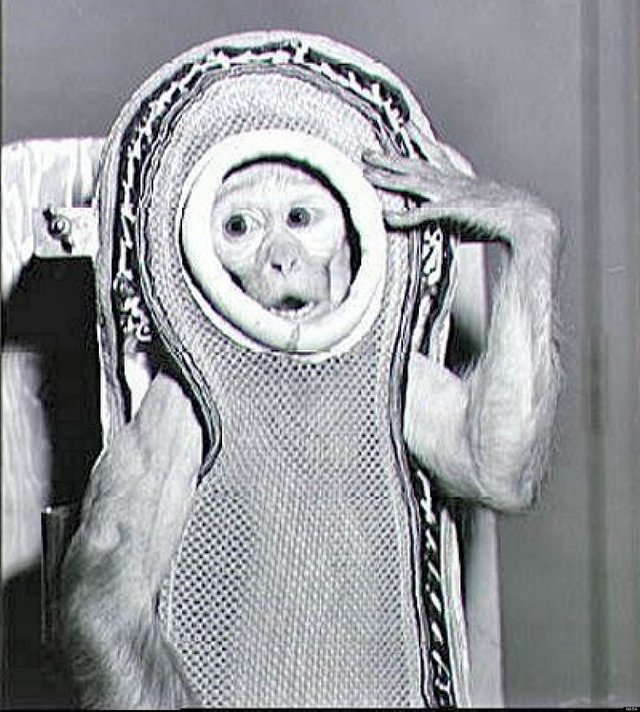
Guinea pigs
The first guinea pig space invader flew with the Soviet Sputnik 9 spacecraft on March 9, 1961, along with a dog named Chernushka, a dummy cosmonaut named Ivan Ivanovich, and an assortment of mice and reptiles. Ivan safely parachuted back to earth (thank God), and the animals made it back to alive.
Rats
In October 1963 France became the first country to send a cat into space, named Felicette. She replaced Felix, who ran away on the eve of the departure.
The French also sent up the first rat, Hector, who reached a height of about 150 km in 1961.
In January 2001 China, seeking to become part of the small club of space powers, sent a spacecraft into orbit with rats aboard. In 2003 it sent its own astronauts into space.
In 2010 Iran, which wants to send a man into space, announced it had successfully tested a locally manufactured rocket containing several animals including a rat, tortoises and worms.
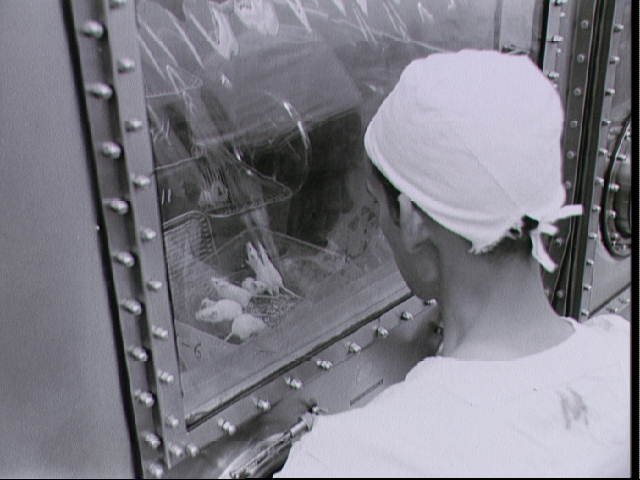
Pushing the limits
As global space agencies work furiously towards propelling people to Mars by the 2030s, questions of survival in deep space are also being explored with the help of animals.
In September 2007 researchers said miniscule eight-legged invertebrate creatures known as “water bears”, or tardigrades, can survive the vacuum, extreme temperatures and ultra-violet radiation of open space.
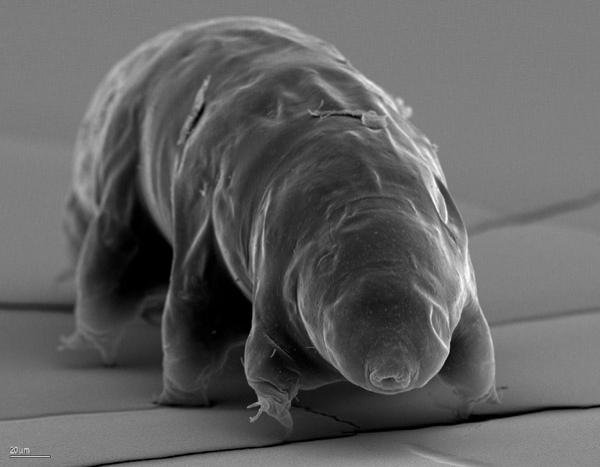
@waterbears
And in 2014 Japanese scientists announced the survival of mouse sperm which had been freeze-dried and sent for nine months to the International Space Station, which orbits about 400 kilometres above the planet.
Back on Earth, the sperm was used to fertilise embryos in vitro to produce healthy offspring that grew into normal adult mice.

Napadhi comment garey hai bro 😂😂 nice one
Downvoting a post can decrease pending rewards and make it less visible. Common reasons:
Submit
hahahaha dhanyabad
Downvoting a post can decrease pending rewards and make it less visible. Common reasons:
Submit
Resteemed by @resteembot! Good Luck!
Curious?
The @resteembot's introduction post
Get more from @resteembot with the #resteembotsentme initiative
Check out the great posts I already resteemed.
Downvoting a post can decrease pending rewards and make it less visible. Common reasons:
Submit
This post was upvoted and resteemed by @resteemr!
Thank you for using @resteemr.
@resteemr is a low price resteem service.
Check what @resteemr can do for you. Introduction of resteemr.
Downvoting a post can decrease pending rewards and make it less visible. Common reasons:
Submit
Resteemed to over 9500 followers and 100% upvoted. Thank you for using my service!
Send 0.100 Steem or 0.100 Steem Dollar and the URL in the memo to use the bot.
Read here how the bot from Berlin works. News you will find under the hashtag #resteembotnews.
Please help us grow and use our link to trade #IOTA #BTC #ETH and a lot of more at one of the biggest exchanges. https://www.binance.com/?ref=10230705
@resteem.bot
Downvoting a post can decrease pending rewards and make it less visible. Common reasons:
Submit
Greetings! I am a minnow exclusive bot that gives a 5X upvote!
I recommend this amazing guide on how to be a steemit rockstar!
I was made by @EarthNation to make Steemit easier and more rewarding for minnows.
Downvoting a post can decrease pending rewards and make it less visible. Common reasons:
Submit